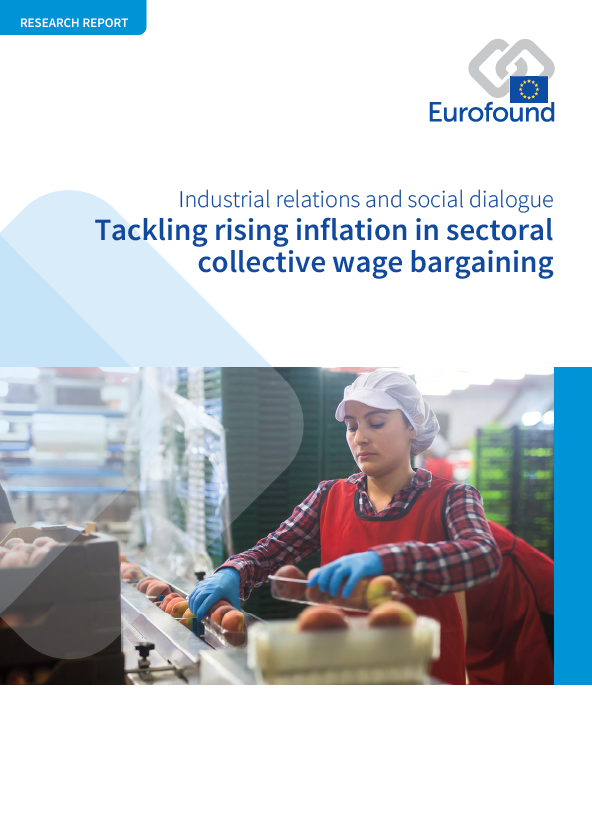
After a long period of price stability, inflation has made a remarkable comeback in the EU. In the aftermath of the COVID-19 pandemic, the energy crisis spurred by Russia’s war of aggression against Ukraine and the disruption of the international supply chain, among other factors, have driven up the prices of commodities and goods. While nominal wages picked up in 2021 and 2022, real wage growth has remained below inflation, affecting mainly low-income groups. Even though EU institutions expect inflation to slowly decline by 2025, many collective bargaining rounds have barely been able to keep up with the rapid increase in prices in 2022. Consequently, trade unions’ demands for compensation and pay increases in collectively agreed wages put pressure on some sectors. Updating minimum wages (in line with the directive on adequate minimum wages) plays a key role in protecting the purchasing power of low wages. With wages not keeping up with inflation rates, tensions may resurface in social dialogue and collective bargaining over the coming years.
Key findings
- Inflation is back and although it is expected to slow down steadily by 2025, projections forecast that price growth is set to persist in the medium term. Trends in collective negotiated wages in 2022 did not reflect the rising cost of living, resulting in further purchasing power losses for employees.
- Collective wage bargaining regimes and pay-setting mechanisms vary greatly across the EU and show marked differences between sectors. Collective wage agreements analysed in four sectors – chemical and pharmaceutical, metalworking, and hospitality and domestic work – in France, Germany and Italy show how negotiated wages have struggled to keep up with inflation developments, mostly growing slower than inflation.
- Following increases in inflation, the review of statutory minimum wages in the sectoral collective agreements analysed has played an indirect, but significant role. The impact of the minimum wage increases tends to be greater for those workers with lower wages, and in principle has a positive distributional impact by narrowing the wage structure in collective wage agreements.
- New drivers such as labour and skills shortages may significantly influence sectoral collective bargaining. Although labour shortages are usually connected with jobs linked to the green and digital transition, activities in the services sector are also experiencing labour shortages in lower paid jobs. Investment in upskilling and reskilling, training and improving work incentives, and other targeted policies for specific sectors, should be reinforced to reduce labour shortages, as proposed in the 2023 European Year of Skills.
- Even though governments have launched extensive relief packages aimed at cushioning the impact of inflation on households, families and on sectors, hardly any specific measures have influenced collective wage negotiations, except for the inflation allowance in Germany.
The report contains the following lists of tables and figures.
List of tables
- Table 1: Government policies and initiatives to mitigate the impact of inflation
- Table 2: Sectoral collective agreements covered in the research
List of figures
- Figure 1: Economic forecast for spring 2023 – gross domestic product growth in the EU, euro zone and 27 Member States (%)
- Figure 2: Euro zone annual inflation and its main components, June 2013–June 2023 (annual rate of change)
- Figure 3: Nominal wage growth (consumer wages)
- Figure 4: Real wage growth (consumer wages)
- Number of pages
-
40
- Reference nº
-
EF23005EN
- ISBN
-
978-92-897-2343-5
- Catalogue nº
-
TJ-04-23-772-EN-N
- DOI
-
10.2806/004554
- Permalink
To be notified of this publication and other publications in this area please visit the subscription management centre to update your contact details and subscription preferences.
Cite this publication
Eurofound (2023), Tackling rising inflation in sectoral collective wage bargaining, Publications Office of the European Union, Luxembourg.